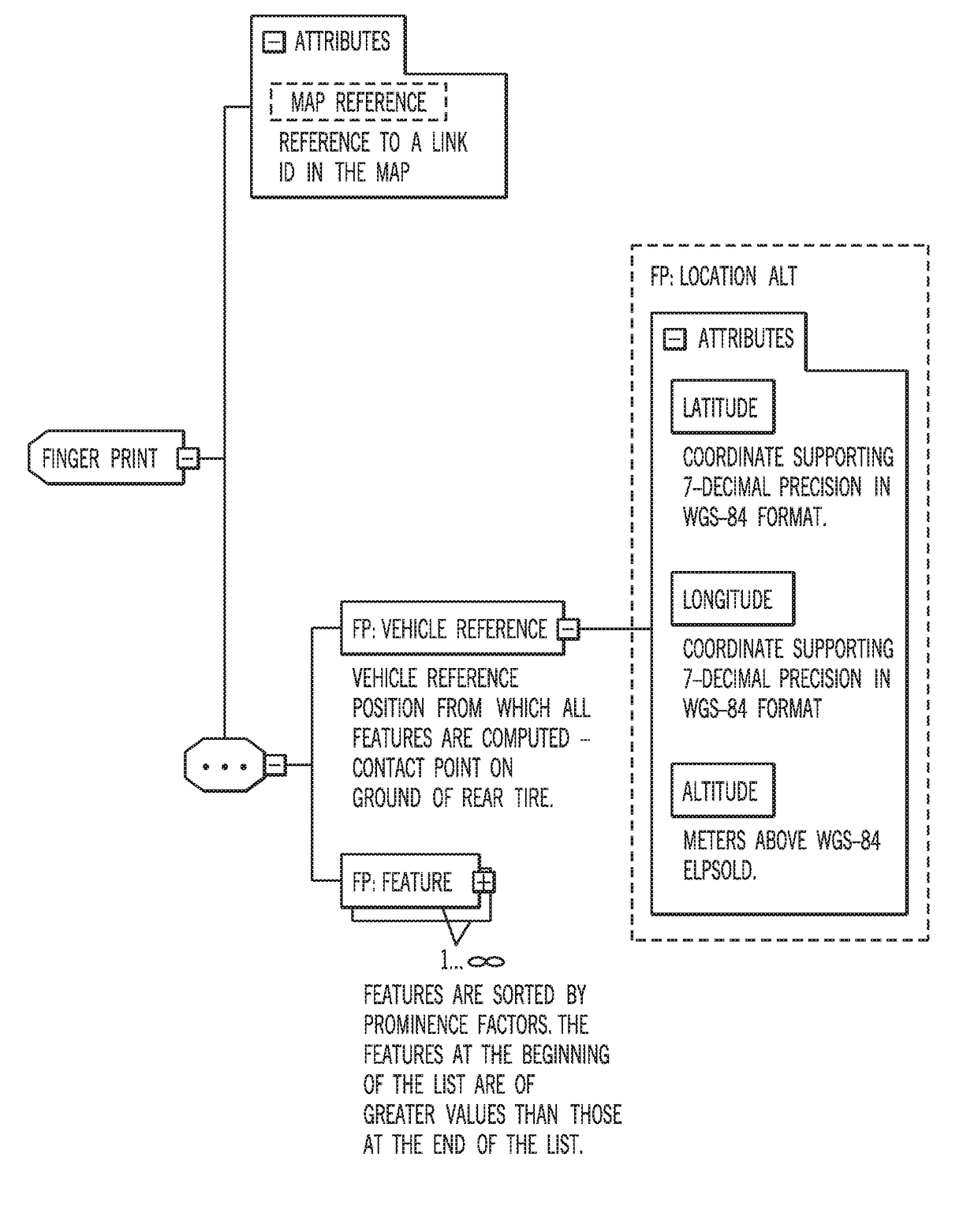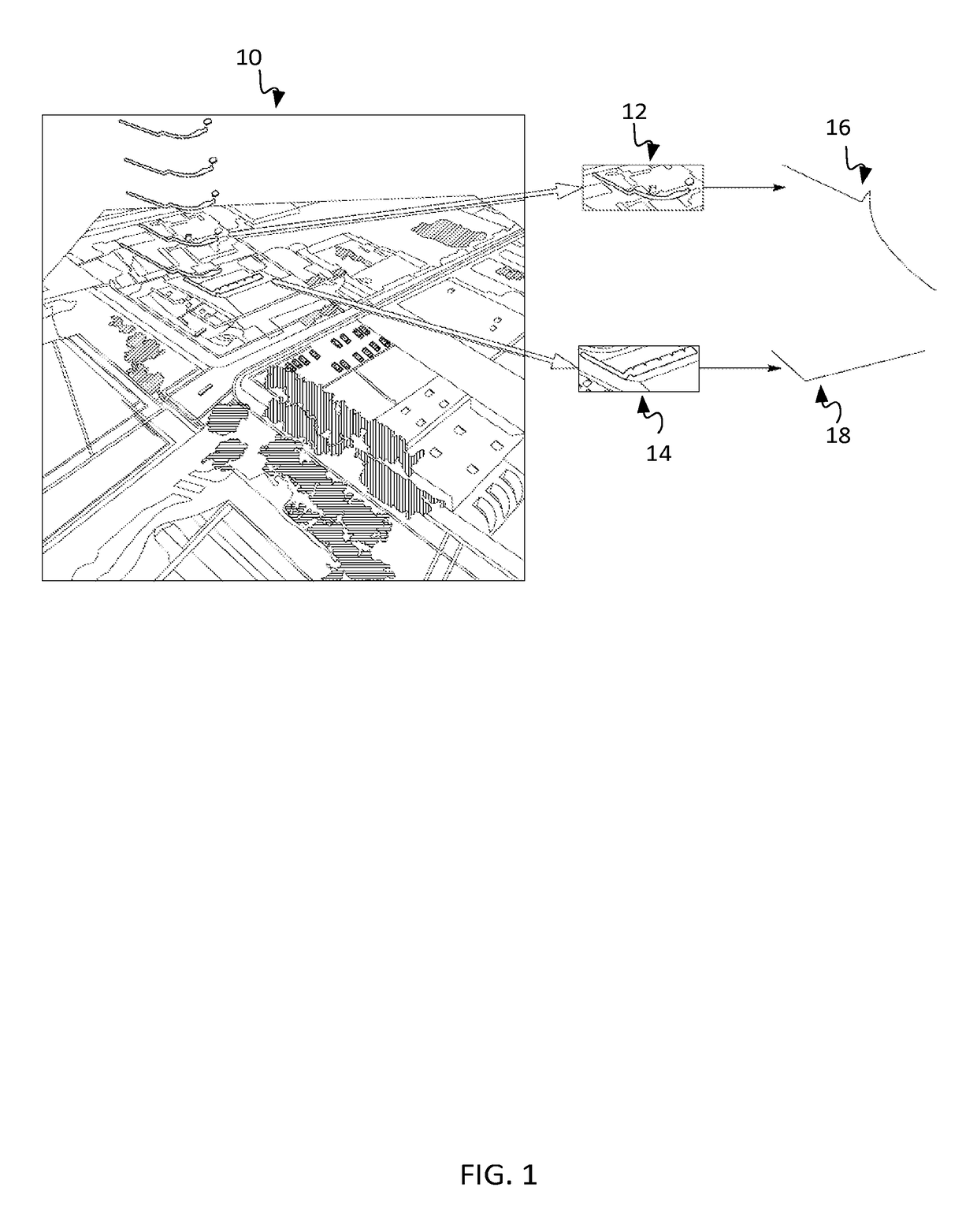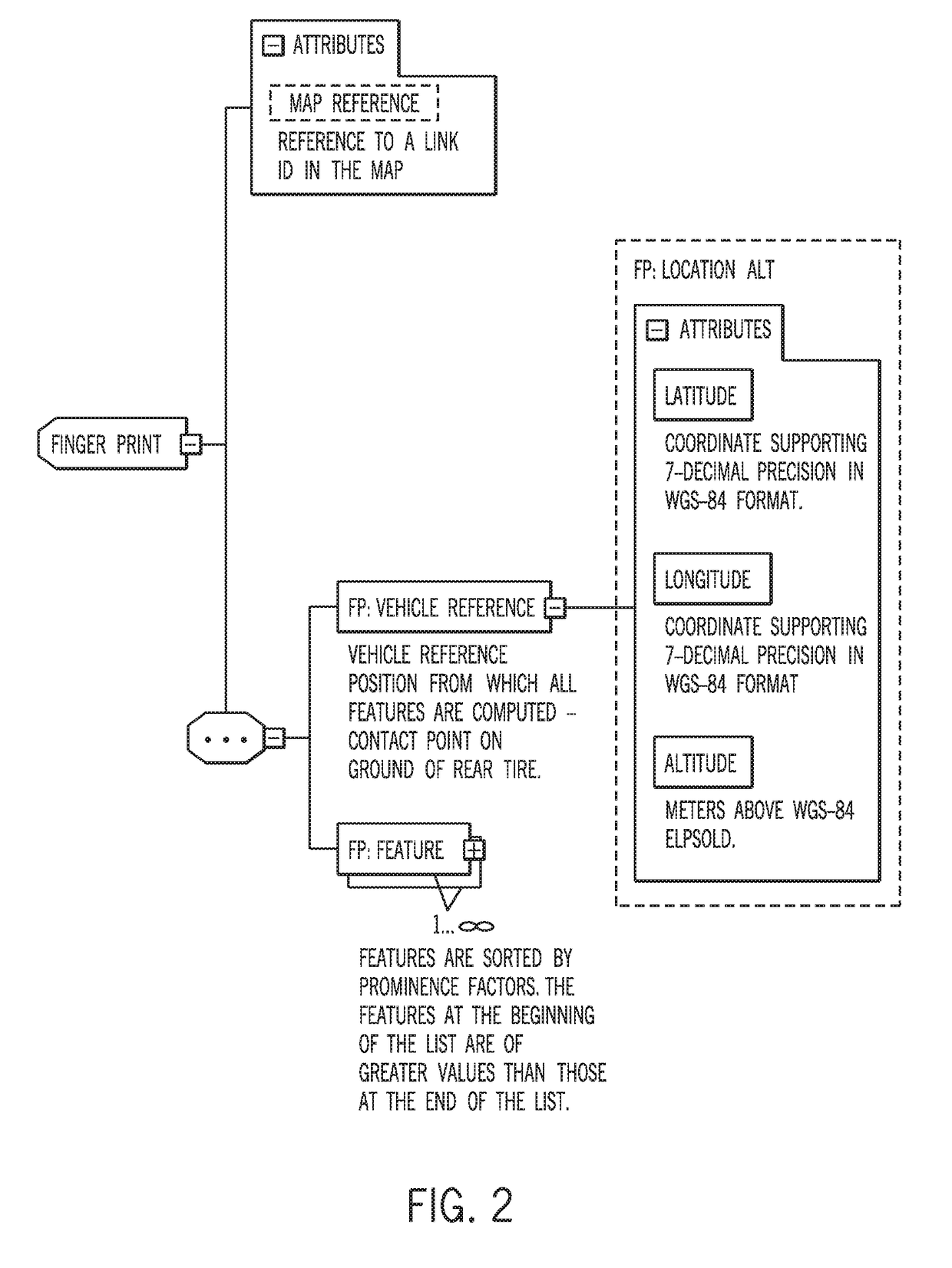Guided Geometry Extraction for Localization of a Device
a technology of localization and geometry extraction, applied in the field of guided geometry, can solve the problems of merely representational illustrations and may not be drawn to scal
- Summary
- Abstract
- Description
- Claims
- Application Information
AI Technical Summary
Benefits of technology
Problems solved by technology
Method used
Image
Examples
Embodiment Construction
[0019]The location or positioning of an end-user device may be determined through the derivation of coordinates from two-dimensional (2D) feature geometries representing real objects in a path (e.g., road) network. An end-user device may refer to a device operated or used by a consumer. Non-limiting examples of end-user devices, as used herein, include vehicles (e.g., cars, trucks, buses, trains, motorcycles, boats, ships), as well as portable electronic devices such as mobile phones, laptop computers with wireless capabilities, video recording devices, scanning devices, messaging devices, personal digital assistants, and wearable computers (e.g., smart watches). Feature geometries may refer to two-dimensional shapes such as lines, arcs, and splines (e.g., B-splines) extracted from three-dimensional structures around the device. For example, the 2D feature geometries may be extracted from three-dimensional structures such as building facades, road signs, polls, plants (e.g., trees),...
PUM
 Login to View More
Login to View More Abstract
Description
Claims
Application Information
 Login to View More
Login to View More - R&D
- Intellectual Property
- Life Sciences
- Materials
- Tech Scout
- Unparalleled Data Quality
- Higher Quality Content
- 60% Fewer Hallucinations
Browse by: Latest US Patents, China's latest patents, Technical Efficacy Thesaurus, Application Domain, Technology Topic, Popular Technical Reports.
© 2025 PatSnap. All rights reserved.Legal|Privacy policy|Modern Slavery Act Transparency Statement|Sitemap|About US| Contact US: help@patsnap.com



